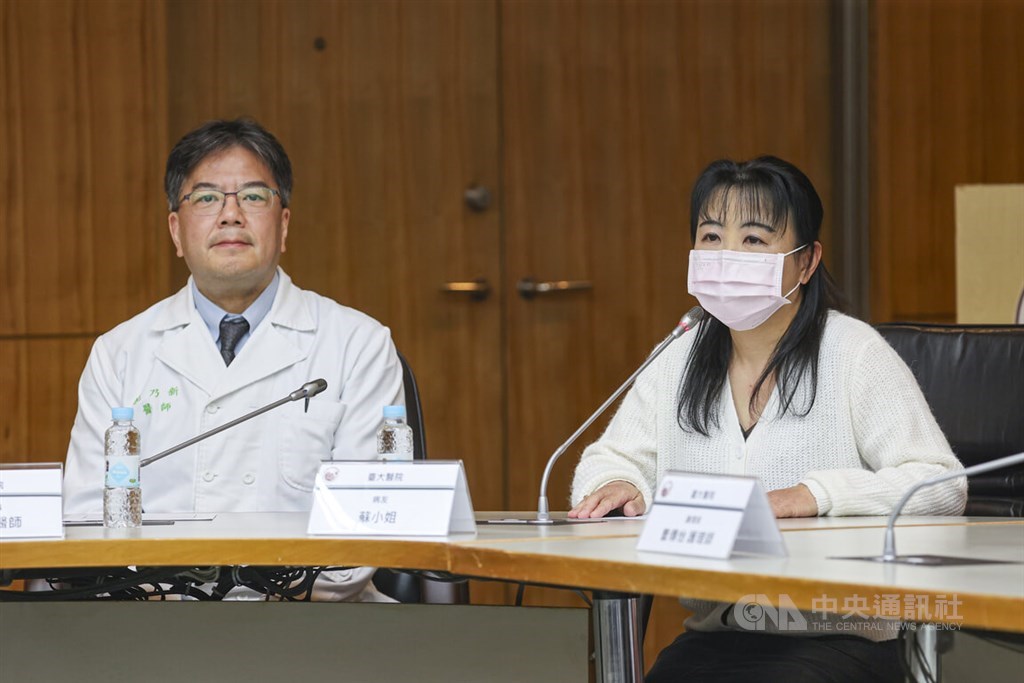Taipei, April 16 (CNA) A team at National Taiwan University Hospital (NTUH) has performed the world’s first heart transplant with zero ischemic time, using a new system that ensures the donor heart never skips a beat and thus reduces damage.
In traditional heart transplant surgeries, the heart stops beating after it is procured from the donor, and the period from procurement to implantation is referred to as the ischemic time, said Chi Nai-hsin (紀乃新), an attending physician at NTUH’s Cardiovascular Center.
“We wanted to perform a heart transplant without any ischemic time so that the heart wouldn’t have to stop, and we could also avoid injury [to heart tissue] that typically occurs after reperfusion,” Chi said at a news conference at the hospital in Taipei on Wednesday.
While the ischemic time for most heart transplants is typically kept under four hours, Chi said shorter durations mean less myocardial damage, higher transplant success rates, and better function, as ischemia leads to oxygen deprivation in cardiac muscle cells.
To keep the heart beating and avoid ischemia during the transplant procedure, the NTUH team drew inspiration from extracorporeal membrane oxygenation (ECMO) and designed a mobile organ care system (OCS) that can continuously perfuse the heart with oxygenated blood, Chi said.
After receiving approval from NTUH’s Research Ethics Committee in April last year, a transplant surgery using the new OCS was performed on a 49-year-old female patient with dilated cardiomyopathy — a heart muscle disease that makes it harder to pump blood — in August, Chi said.
In a video shown at the news conference, the donor heart was connected to the OCS and continued beating as it was transported to another operating room, where the female patient awaited the transplant.
After the successful transplant, the patient, surnamed Su (蘇), resumed normal daily life with a heart that never skipped a beat, and follow-up assessments showed excellent heart function, Chi said.
He cited her low level of cardiac enzyme — an indicator of heart muscle injury that is typically elevated after transplantation — as an example of the heart’s well-preserved condition following the surgery.
“We have demonstrated the safety and feasibility of the surgery,” Chi said, noting that another heart transplant using the same OCS was successfully performed earlier this year, with hopes that the technique can be applied to more cases in the future.
Su’s case and the use of the OCS were featured in an article titled “First-in-human Zero-Ischemia-Time Beating-Heart Transplant,” which was accepted for publication by the Journal of Thoracic and Cardiovascular Surgery Techniques, an international peer-reviewed journal, in late March.
In the same journal, a team of researchers from Stanford University in the United States published an article in March 2023 titled “First Beating-Heart Transplant From a Donation after Cardiac Death Donor.”
According to article’s “central message,” those Stanford researchers reported “the first case of a beating heart transplant with uninterrupted coronary perfusion in a heart procured from a deceased after circulatory death.”
Asked about the difference between NTUH’s procedure and Stanford’s, Chen Yih-shurng (陳益祥), head of NTUH’s Organ Transplant Team, said that the Stanford team briefly stopped the donor heart after procurement before connecting it to the OCS, resulting in a short ischemic period of about 10 to 30 minutes.
For the two cases performed by NTUH’s team, “the hearts were still beating before procurement, continued beating after procurement, and never stopped — achieving zero ischemic time,” Chen said.
